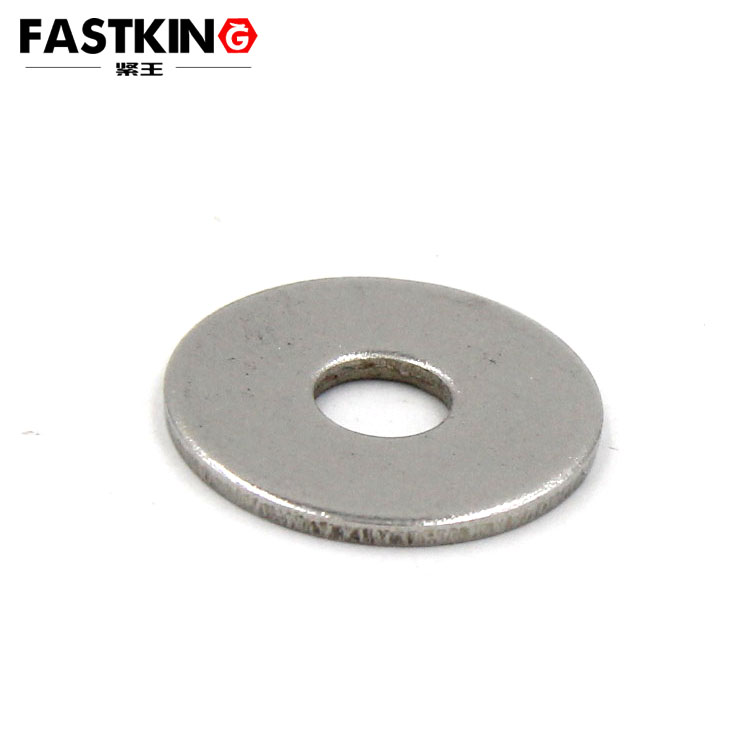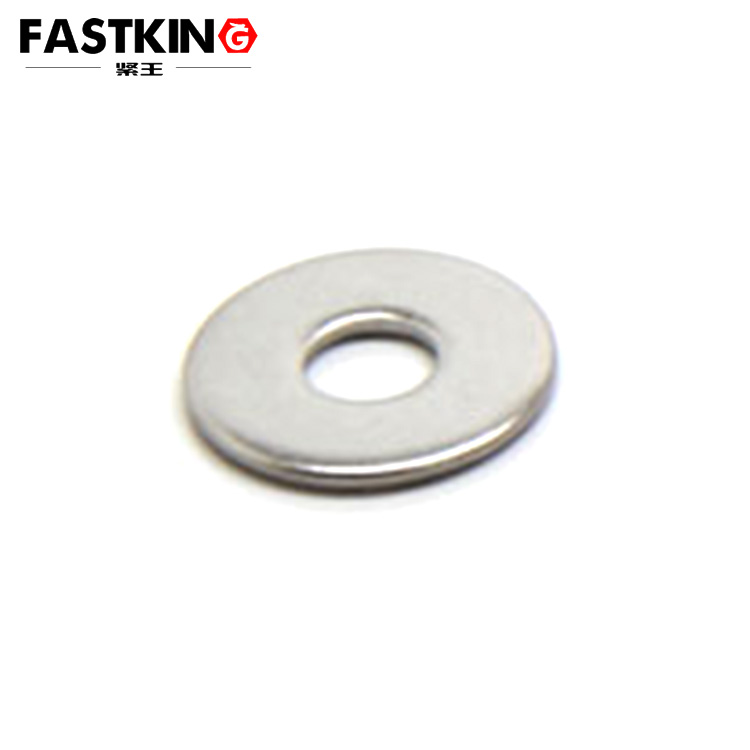The dimension standards of 200HV flat washers comply with a number of international and national standards, such as ISO 7090 and GB/T 97.1. These standards clearly specify the inner diameter (d1), outer diameter (d2) and thickness (h) of the washers, and classify a series of specifications according to the nominal diameter of the matching bolts.
Taking the ISO 7090 standard as an example, when matching M5 bolts, the nominal value of the washer's inner diameter d1 is 5.30mm, with an allowable range of 5.30 - 5.48mm; the nominal value of the outer diameter d2 is 10.00mm, with a range of 9.64 - 10.00mm; the nominal value of the thickness h is 1mm, with a tolerance of ±0.1mm. Under the GB/T 97.1 standard, the inner diameter of the M5 flat washer is 5.3mm, the outer diameter is 10mm, and the thickness is 1mm. There may be slight differences in dimensions between different standards, so in actual selection, strict reference should be made to the design requirements and the standard suitable for the application scenario.
In addition, there are corresponding standards for some non-preferred dimensions. For example, the flat washers matching M14 bolts have detailed provisions on their inner diameter, outer diameter and thickness parameters in relevant standards to meet special assembly needs.
In the assembly of general machinery, 200HV flat washers are widely used between bolts and connected parts. For example, in the connection between the machine tool bed and the base, installing a 200HV flat washer of appropriate size on the bolt can increase the contact area between the bolt head or nut and the machine tool bed or base, evenly distribute the fastening force, prevent material deformation caused by excessive local pressure, ensure the overall structural stability of the machine tool, and guarantee the processing accuracy. During the assembly of the motor housing, the flat washer can avoid scratches and damage to the surface of the motor housing during the bolt tightening process, and at the same time play an auxiliary anti-loosening role, reduce the risk of bolt loosening caused by vibration, and ensure the stable operation of the motor.
In the connection of building structural parts, such as the splicing of steel structure frames, 200HV flat washers used with high-strength bolts can effectively transmit loads and enhance the reliability of connection nodes. In the installation of wall decorative panels, the use of flat washers can make the screw fastening force evenly distributed on the surface of the decorative panel, avoid cracking or deformation of the panel due to uneven local stress, and improve the decoration quality and aesthetics. For the installation of wooden doors and windows, flat washers can prevent screws from sinking into the wood, ensure smooth opening and closing of doors and windows, and play a certain moisture-proof role to extend the service life of doors and windows.
The fixing of internal components of electronic equipment has high requirements on the precision and material of washers. 200HV flat washers, with moderate hardness and precise dimensions, are often used in links such as circuit board fixing and shell assembly. Inside laptops, components such as hard disks and motherboards are fixed by screws and flat washers. The flat washers can prevent screw loosening from affecting the stability of the electrical connection of electronic components, and at the same time avoid damage to fragile electronic components due to excessive screw tightening, ensuring the normal operation of the equipment.
When selecting 200HV flat washers, first of all, it is necessary to accurately match the dimension specifications according to the nominal diameter of the bolt, ensuring that the inner diameter of the washer is slightly larger than the bolt diameter, and the outer diameter can effectively cover the pressure-bearing area of the connected part. In terms of material, if in a humid and corrosive environment, priority should be given to 200HV flat washers made of stainless steel; in a conventional dry environment, carbon steel material can meet the needs. During installation, the surface of the washer should be kept clean and free of impurities, with the smooth side facing the connected part to reduce frictional resistance, and the rough side in contact with the nut or bolt head to enhance friction and prevent loosening. At the same time, use appropriate tools to tighten the bolts according to the specified torque to ensure that the flat washers perform at their best.





